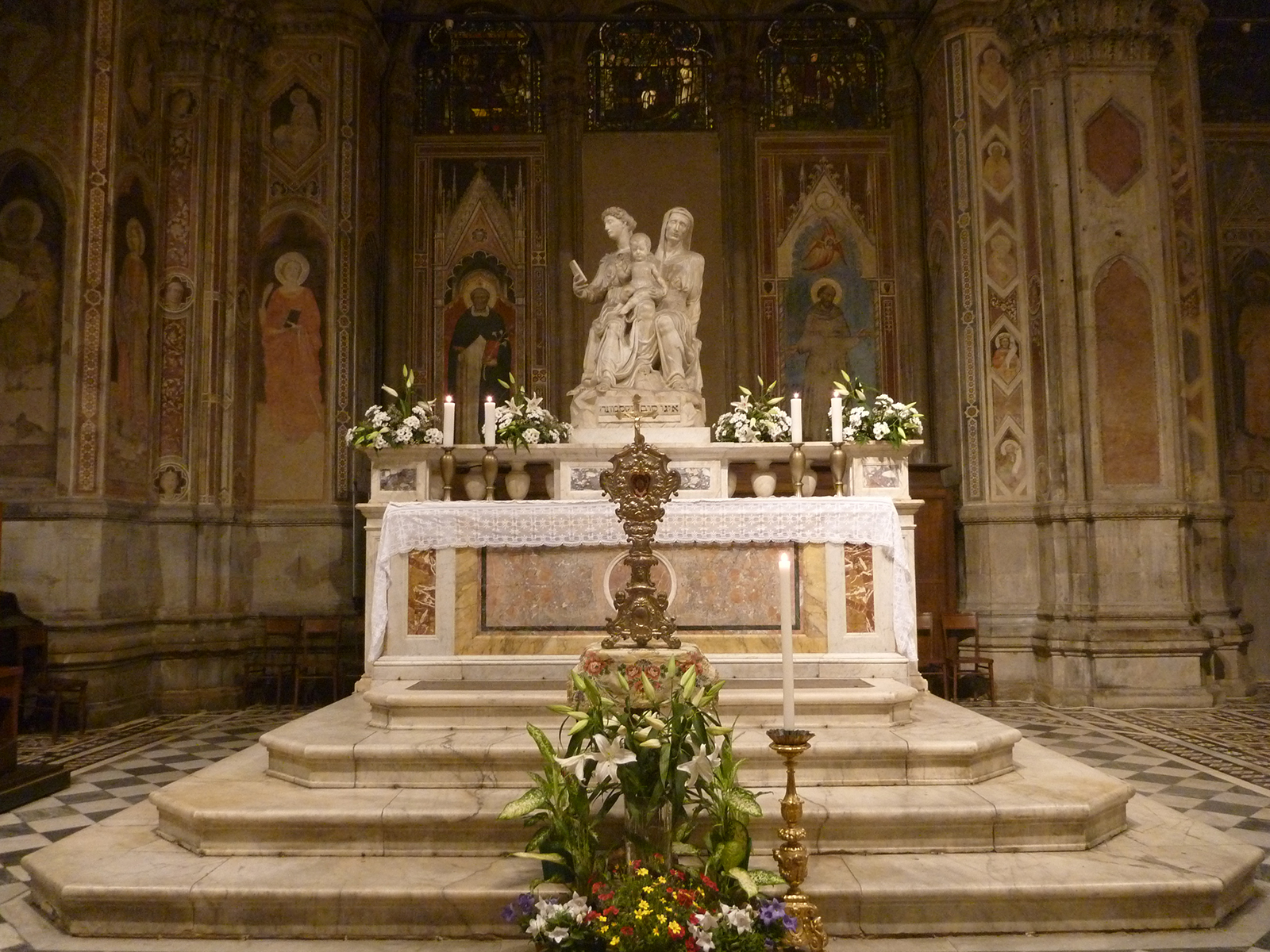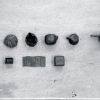Erin Giffin

Saint Anne with lit flowers in Orsanmichele
Dissertation
Body and Apparition: Material Presence in Sixteenth-Century Italian Religious Sculpture
In early modern church interiors across the Italian peninsula, religious devotees gazed upon, spoke to, and touched sculptural sacred objects. These forms of contact reinforced the sensation of presence and communication between the devotee and the sacred figure, often inciting offerings of garlands, jewelry, and other adornment at many cult sites. Bound up in this religious practice, multiple materials are at work: in the offerings bequeathed — ephemera, wax, precious metals — but also in the sculptures themselves. Over the course of the sixteenth century, multiple artists and patrons used sculpture to underscore the sacred message of their subject matter through resonant materials: in the canonical materials of marble and bronze, but also in terracotta, wood, and wax. All of these materials have the potential to convey meaning. That confluence of subject and matter in Italian sacred spaces led to innovations of sculptural discourse across regions and media.
This dissertation addresses the position of sculpture in early modern acts of devotion. The case studies explore original installations and sacred ritual — specifically, how sculpture fit within the sacred interior — as well as the ways in which the medium physically, materially, and symbolically fostered a religious experience for early modern believers. This discussion begins with the Santa Casa di Loreto, or Holy House of the Virgin (1511-1579); Chapter One focuses on how this cult site, seemingly composed of discordant materials, effectively transports the viewer into a biblical space, the home of the Virgin and supposed site of the Annunciation. Between crumbling bricks and polished marble, the Holy House combines a pilgrimage destination with an apparitional experience that is reinforced by the combination of material trompe l’oeil and tactile devotion. This multimedia experience appears also in the case of the Sacro Monte at San Vivaldo (ca. 1500–1530). As the first case study of Chapter Two, this Tuscan holy site combines innovations of sculpture and architecture to guide and instruct the visiting pilgrim through the stages of Christ’s life, death and resurrection. Again, touch and physical proximity reinforce the sacred message. Conversely, the second case study of this chapter, Antonio Begarelli’s Deposition in Modena (1531), compounds its sacred meaning through multiple material references. Through the surface treatment of the sculptures, Begarelli visually transforms his terracotta bodies into marble, and as such the artist conveys twice as many symbolic referents as would a single medium. Finally, this study concludes with Chapter Three and two marble altarpieces: Michelangelo’s Risen Christ (1514–1521) and Francesco da Sangallo’s Virgin and Child with Saint Anne (1522–1526). As with the Santa Casa and Begarelli, marble assumes multiple material significances, referring to antiquity, immortality, and the immateriality of the apparition. The case studies explored in this dissertation illuminate the multivalence of sculptural imagery across sixteenth-century Italy in an effort to reveal the divine presence in sacred space.
Committee
Stuart Lingo, Art History, Chair
Ivan Drpic, Art History
Estelle Lingo, Art History
Ann Huppert, Architecture
Mary O’Neil, History

Erin Giffin
Doctor of Philosophy
Art History
Erin Giffin received her PhD in spring 2017 from the Department of Art + Art History + Design at the University of Washington in Seattle. Her research addresses sixteenth-century sculptural installations and their material and conceptual resonance within sacred spaces. At the University of Washington, Erin has acted as a Teacher’s Assistant, a Study Abroad Program Assistant, and a Lecturer.
Having completed her PhD, Erin will begin a two-year postdoctoral research position at Ludwig-Maximilians-Universität in Munich in fall 2017. Her work will contribute to the research group SACRIMA: The Normativity of Sacred Images in Early Modern Europe, in collaboration with Doctor Chiara Franceschini. Erin’s work will focus on replicas of the Holy House of the Virgin, a popular early-modern cult site copied across the Italian peninsula. Her specific research project is entitled “Devotional Translations: Early Modern Replicas of the Holy House of the Virgin.”

In Siena with Professor Ivan Drpic



